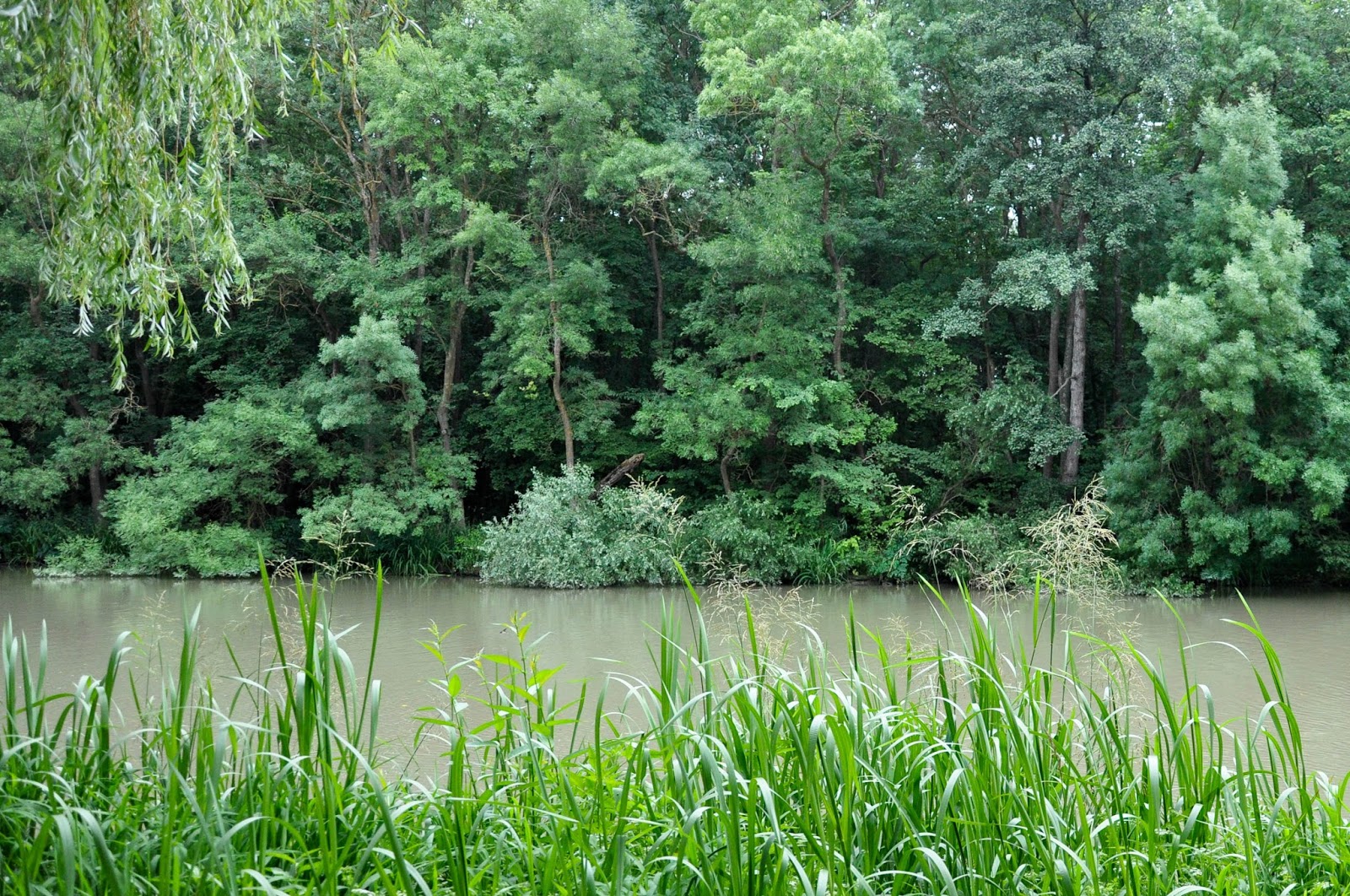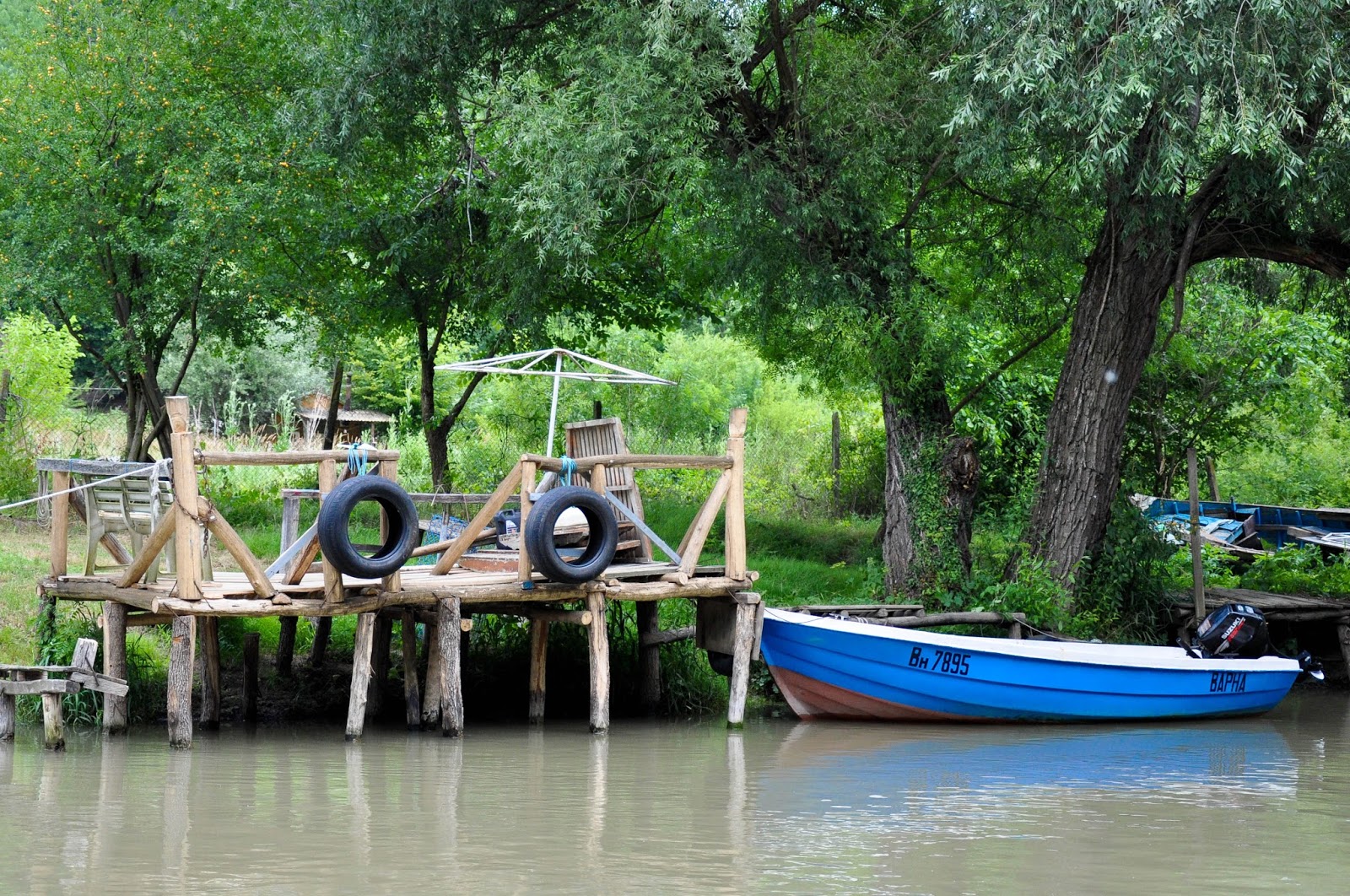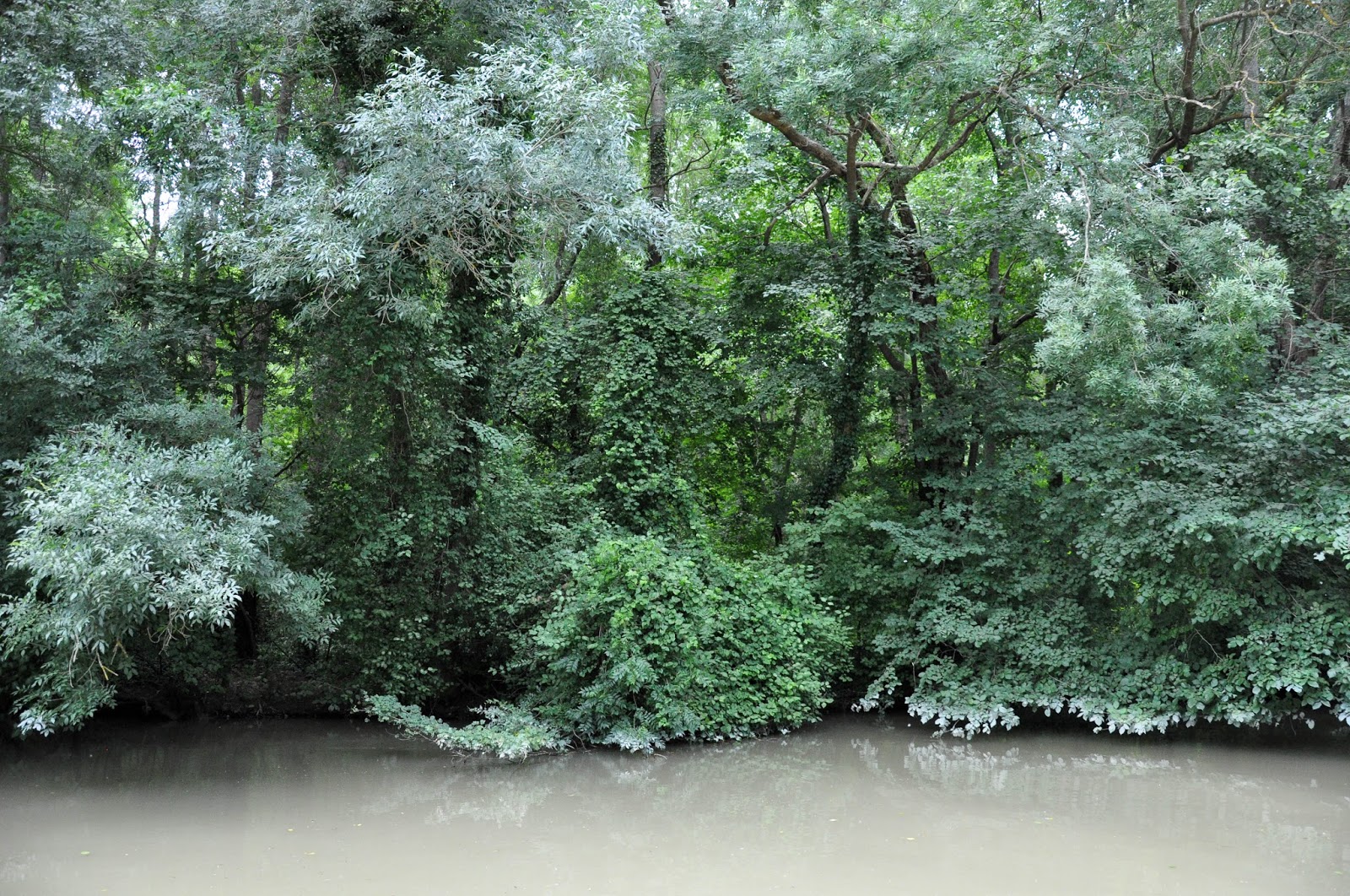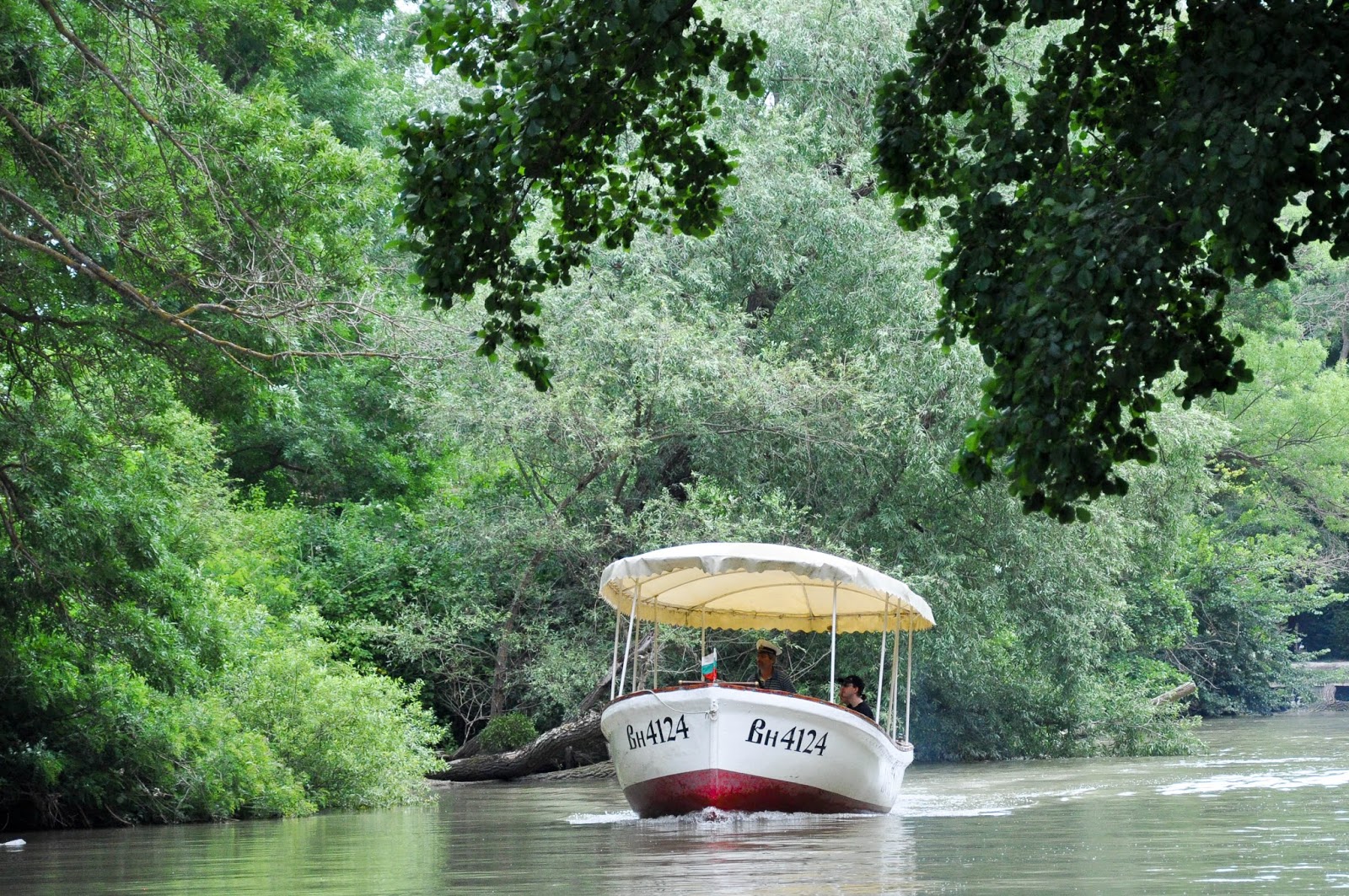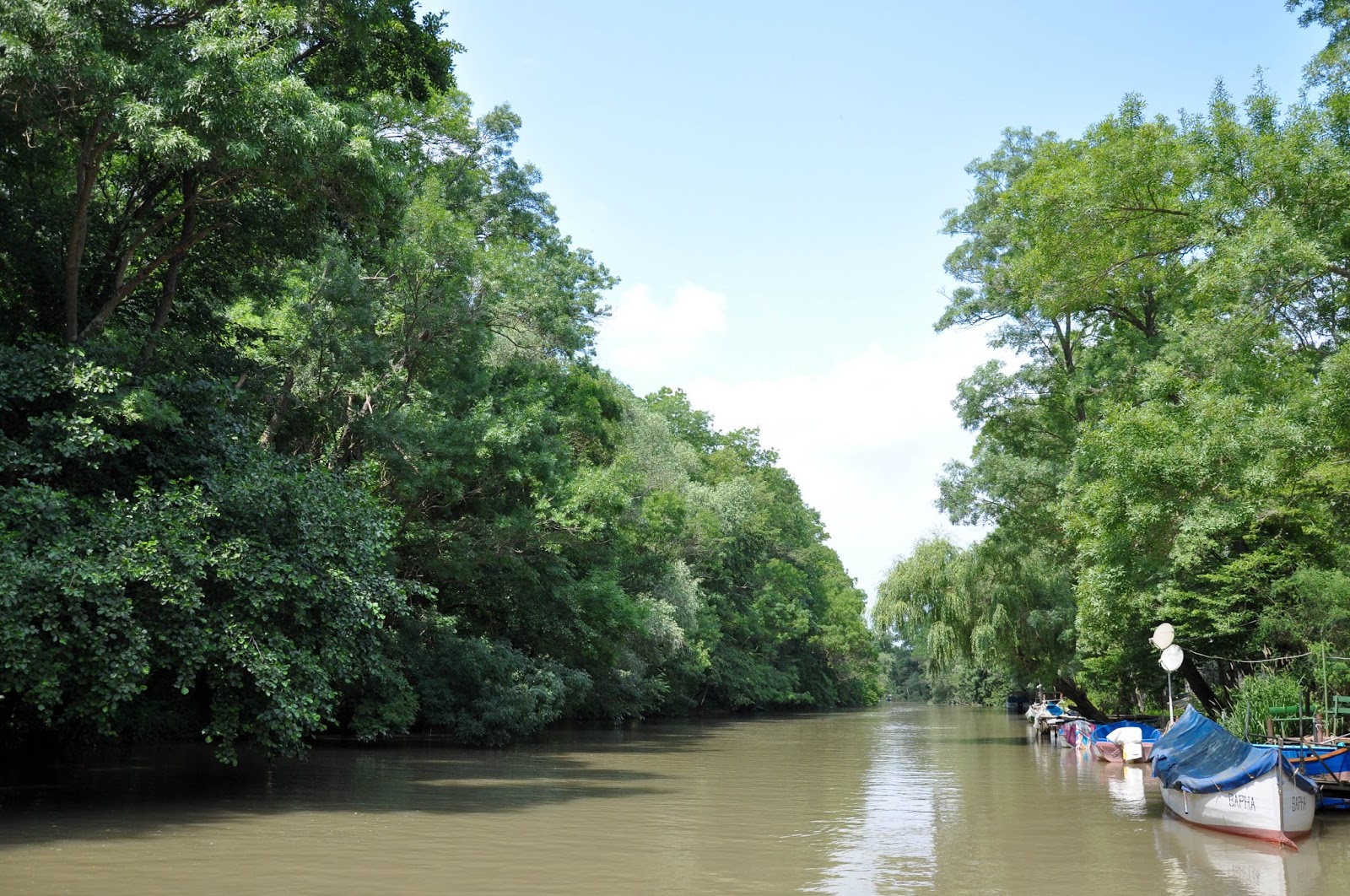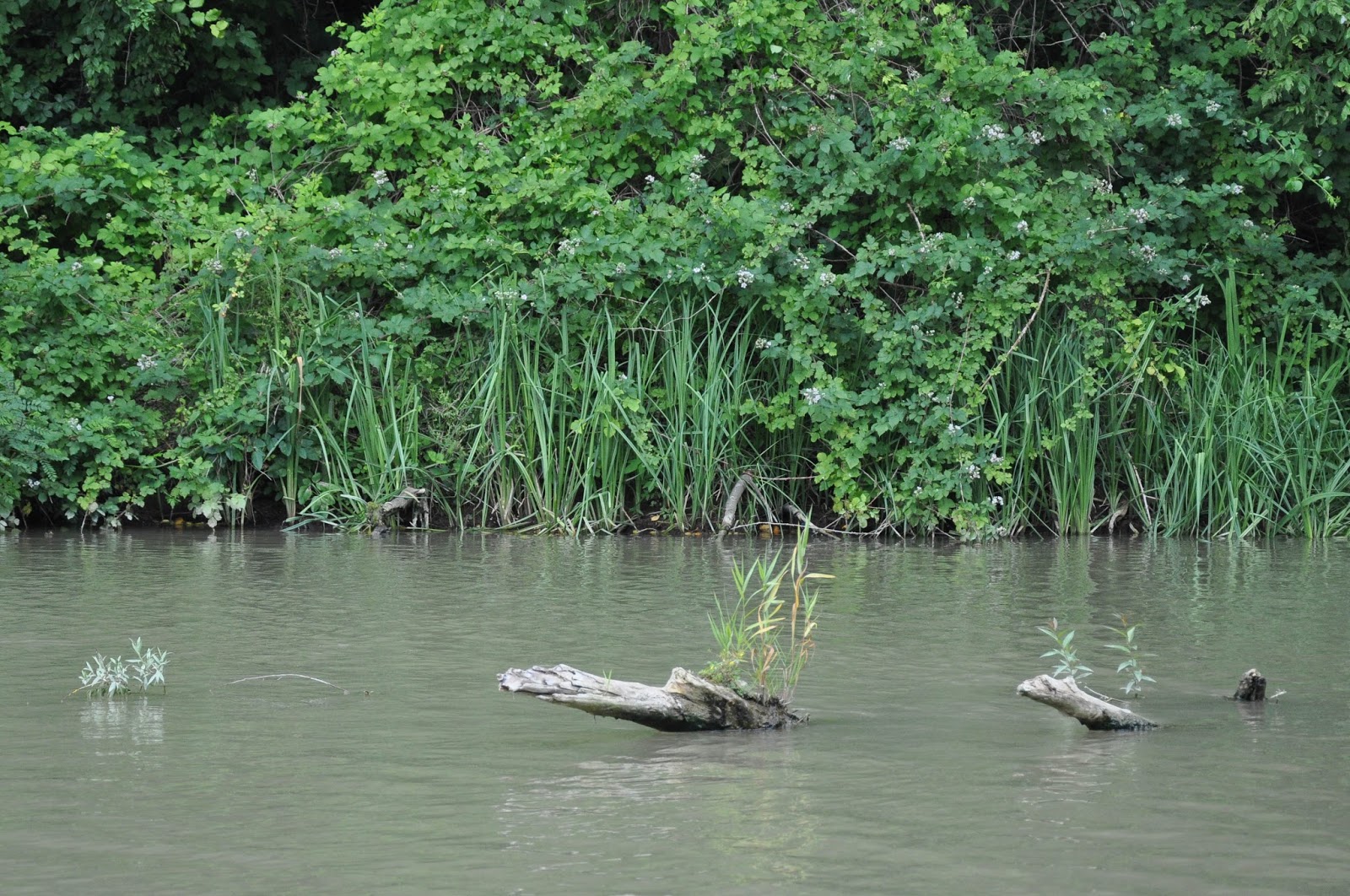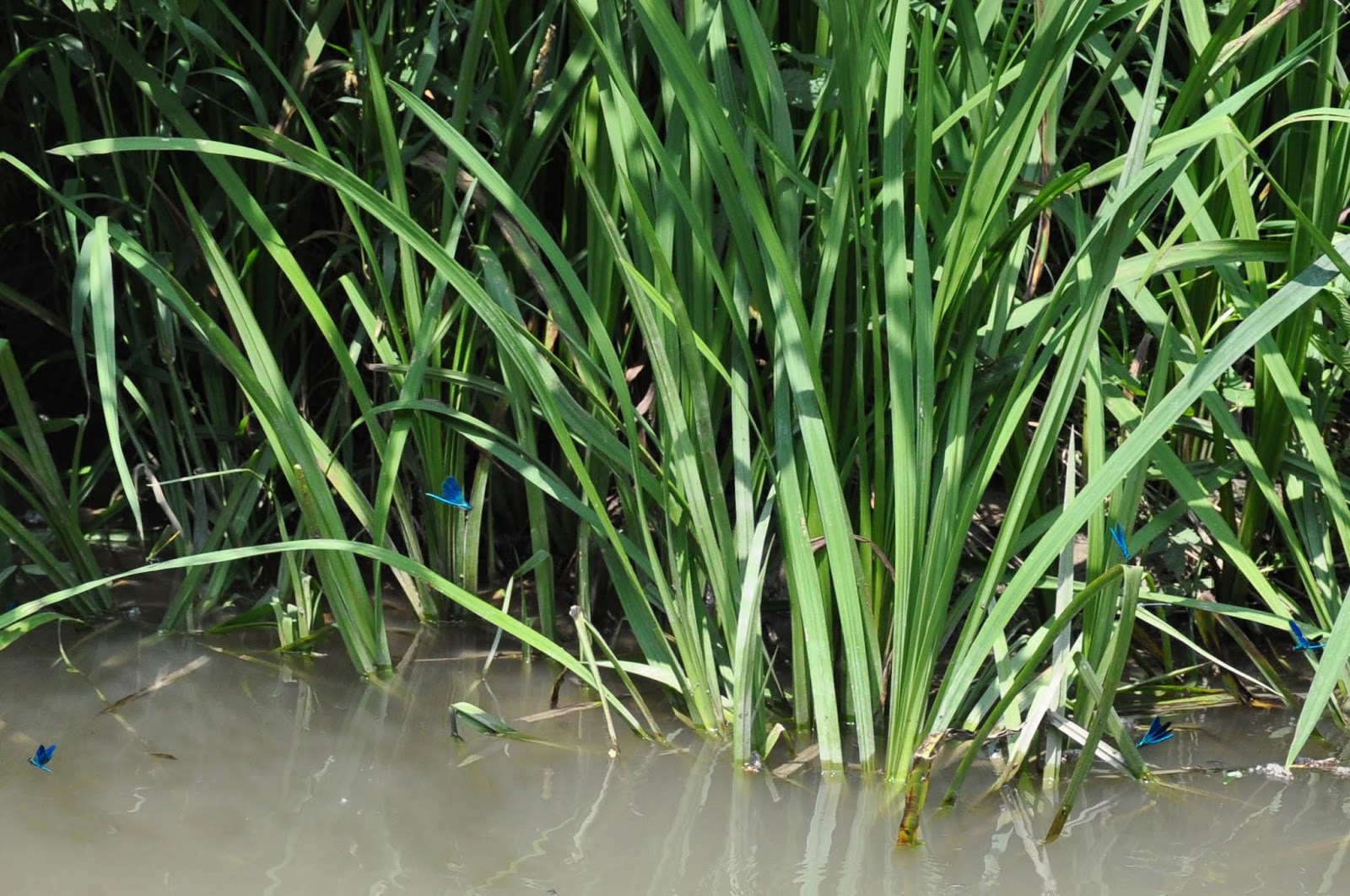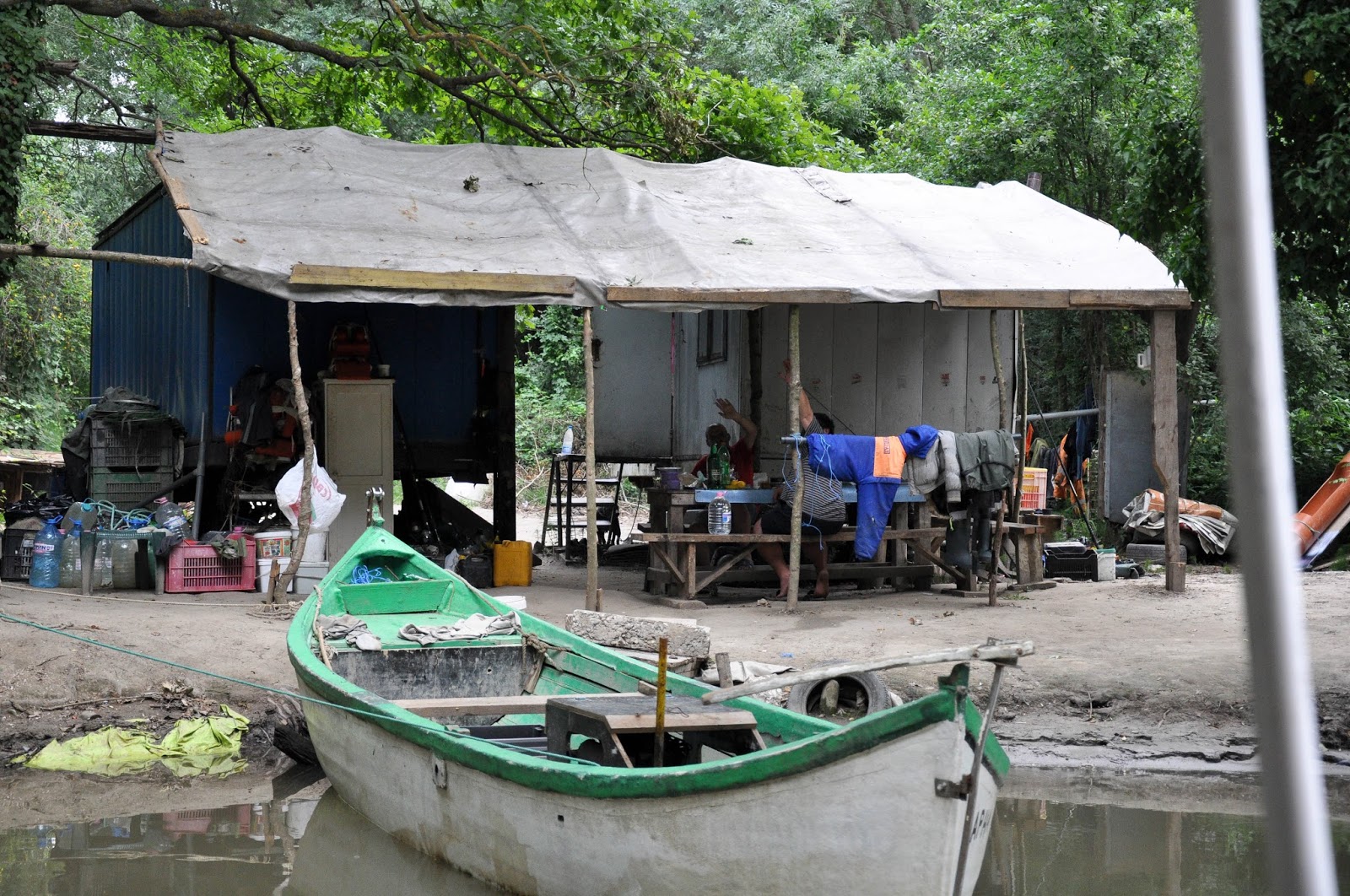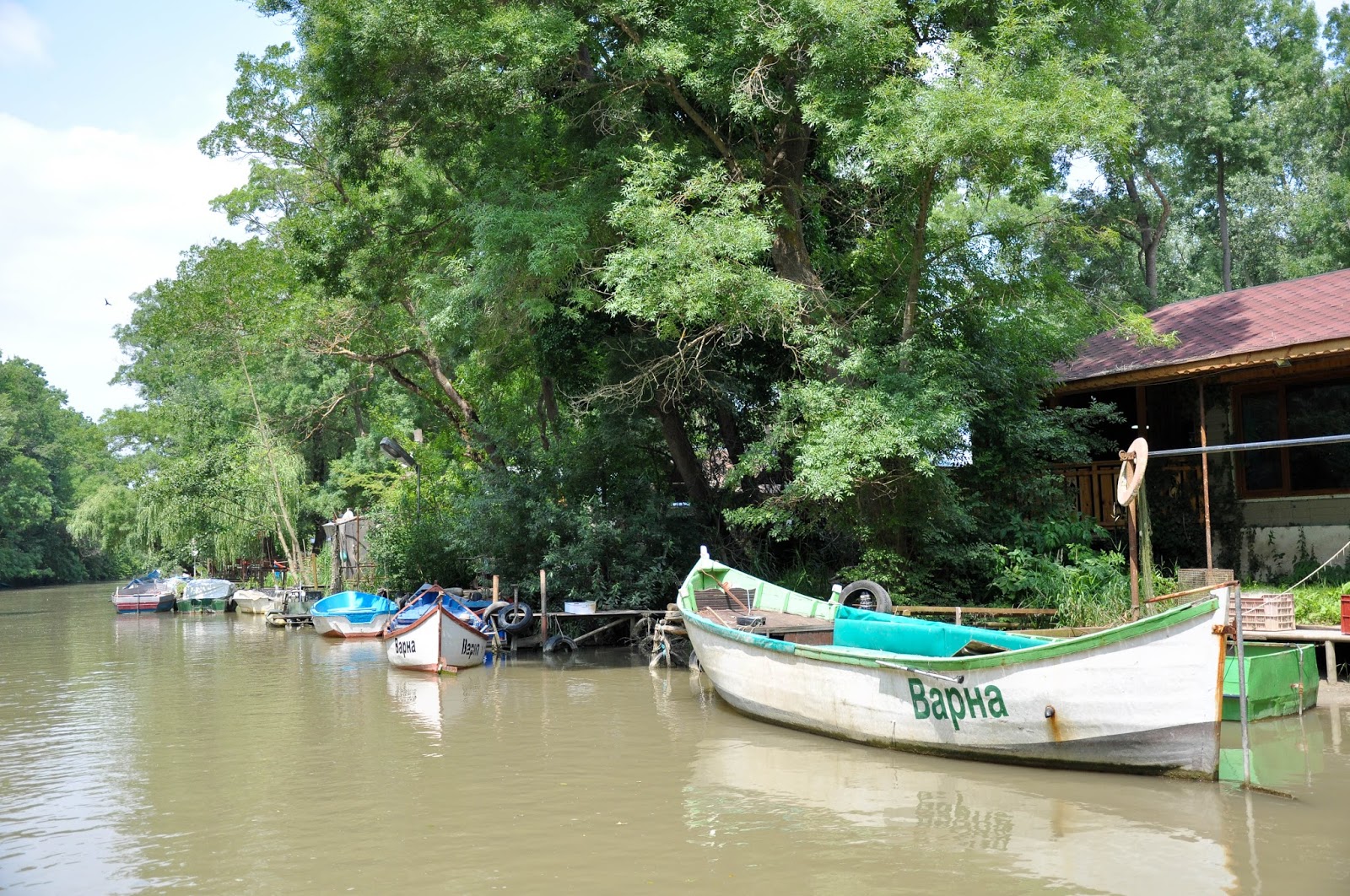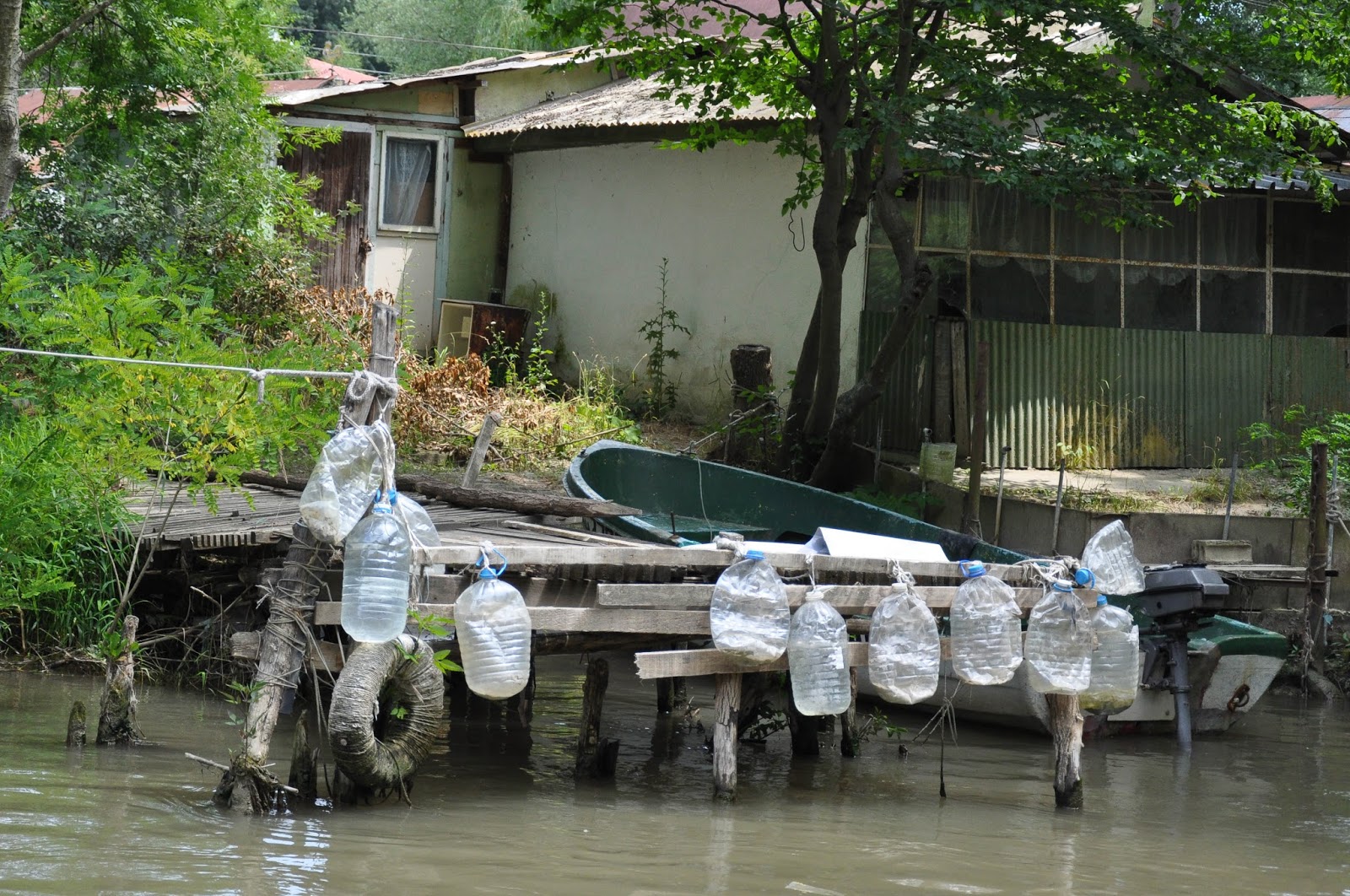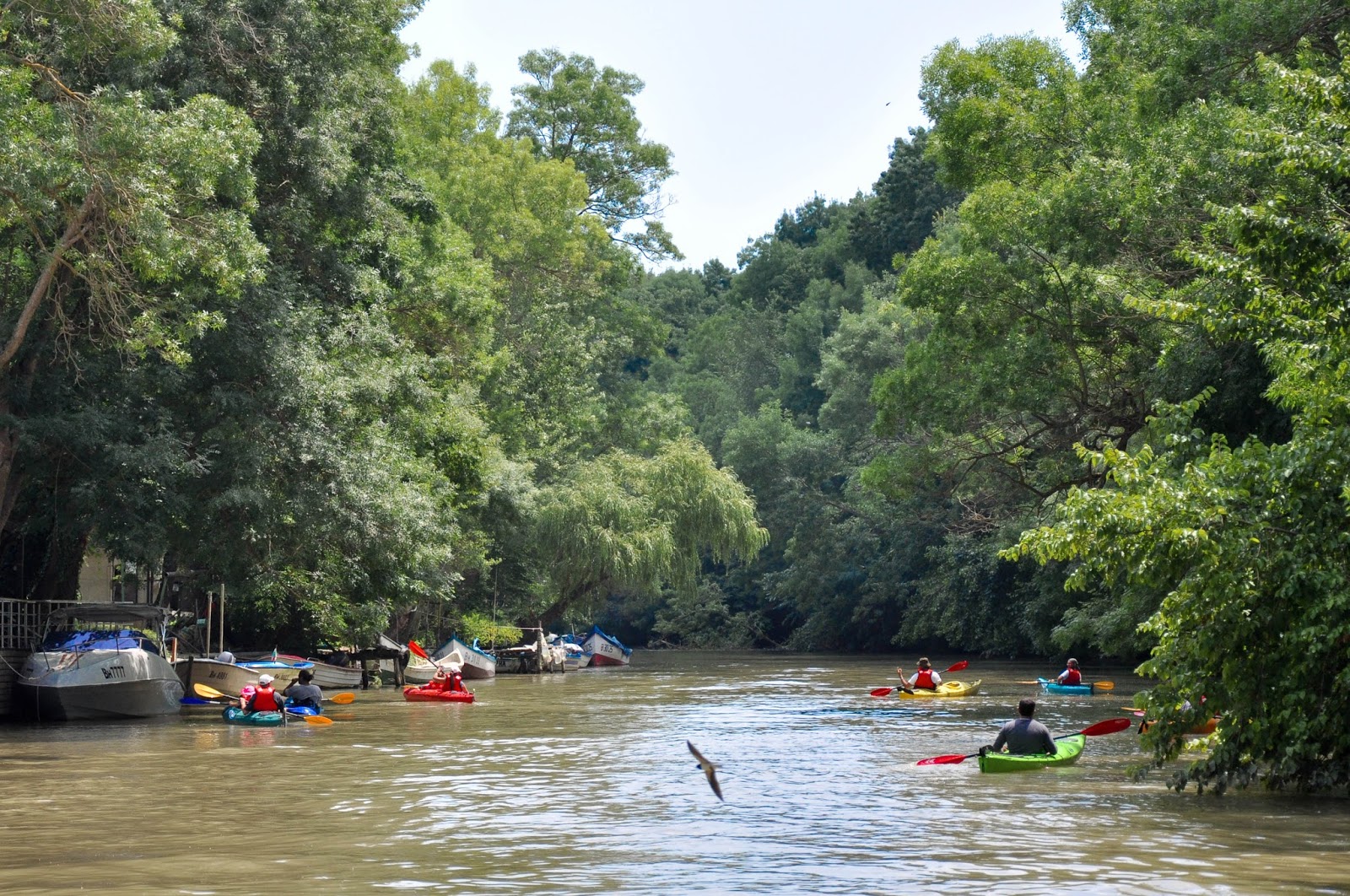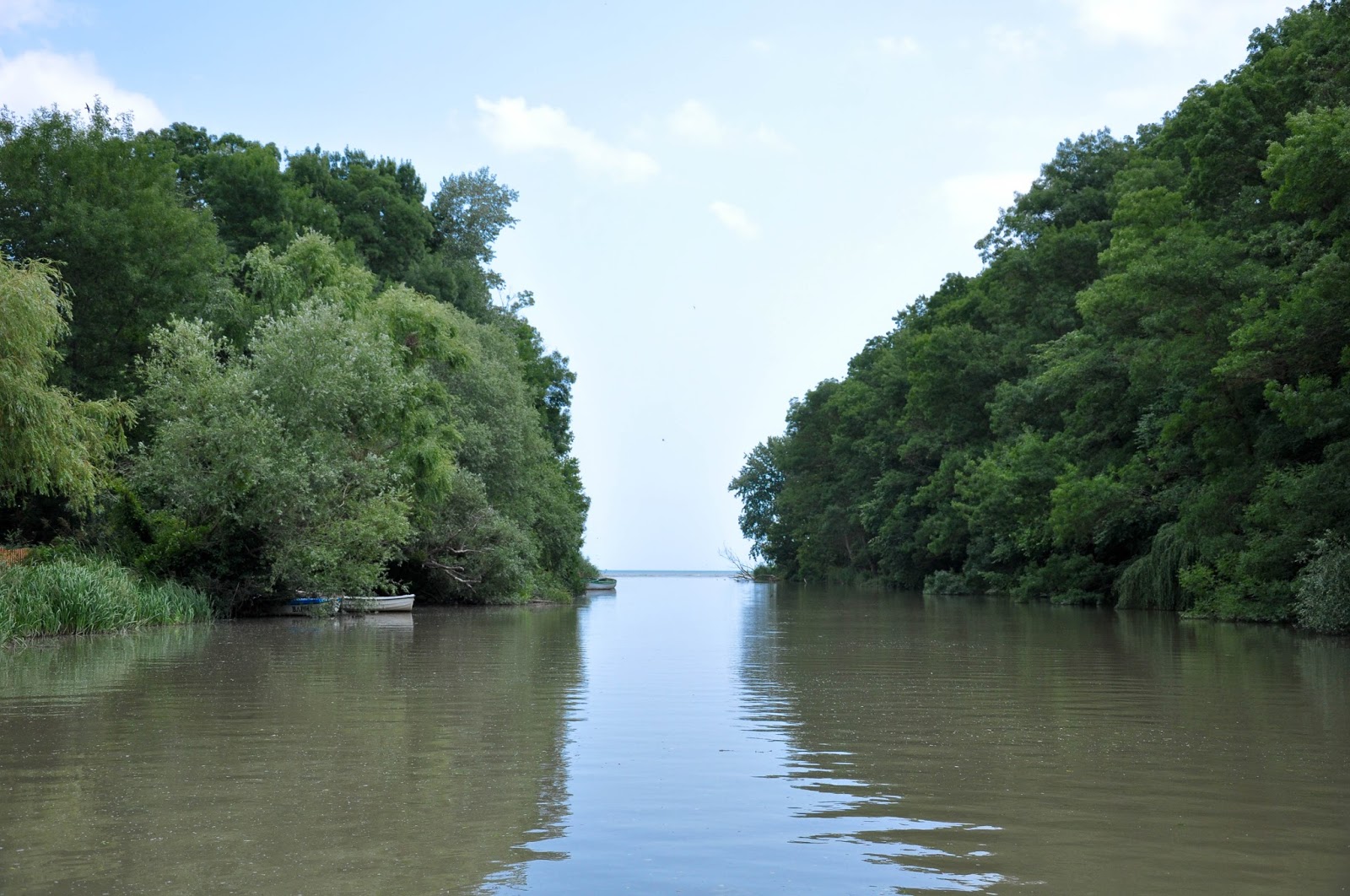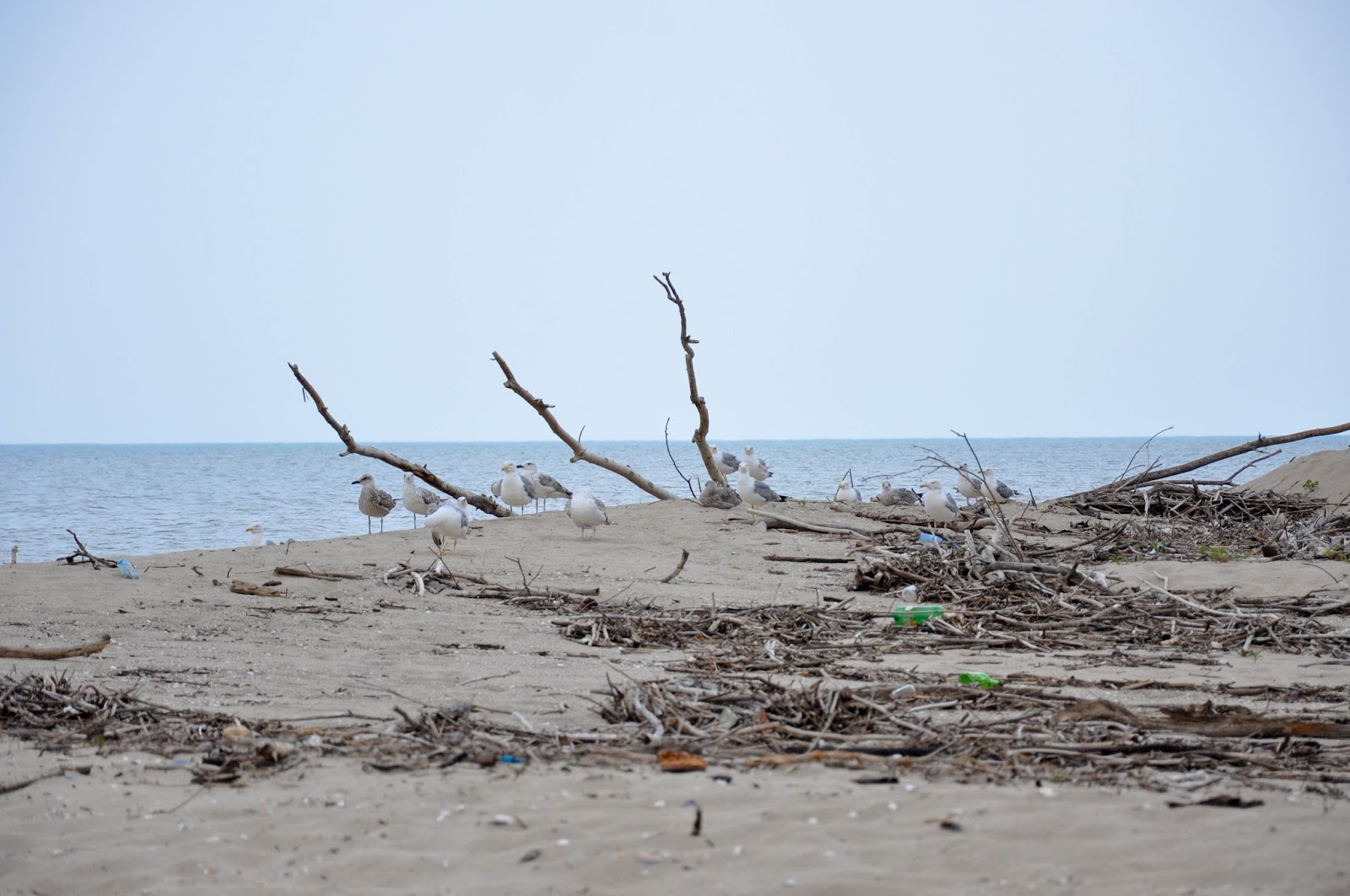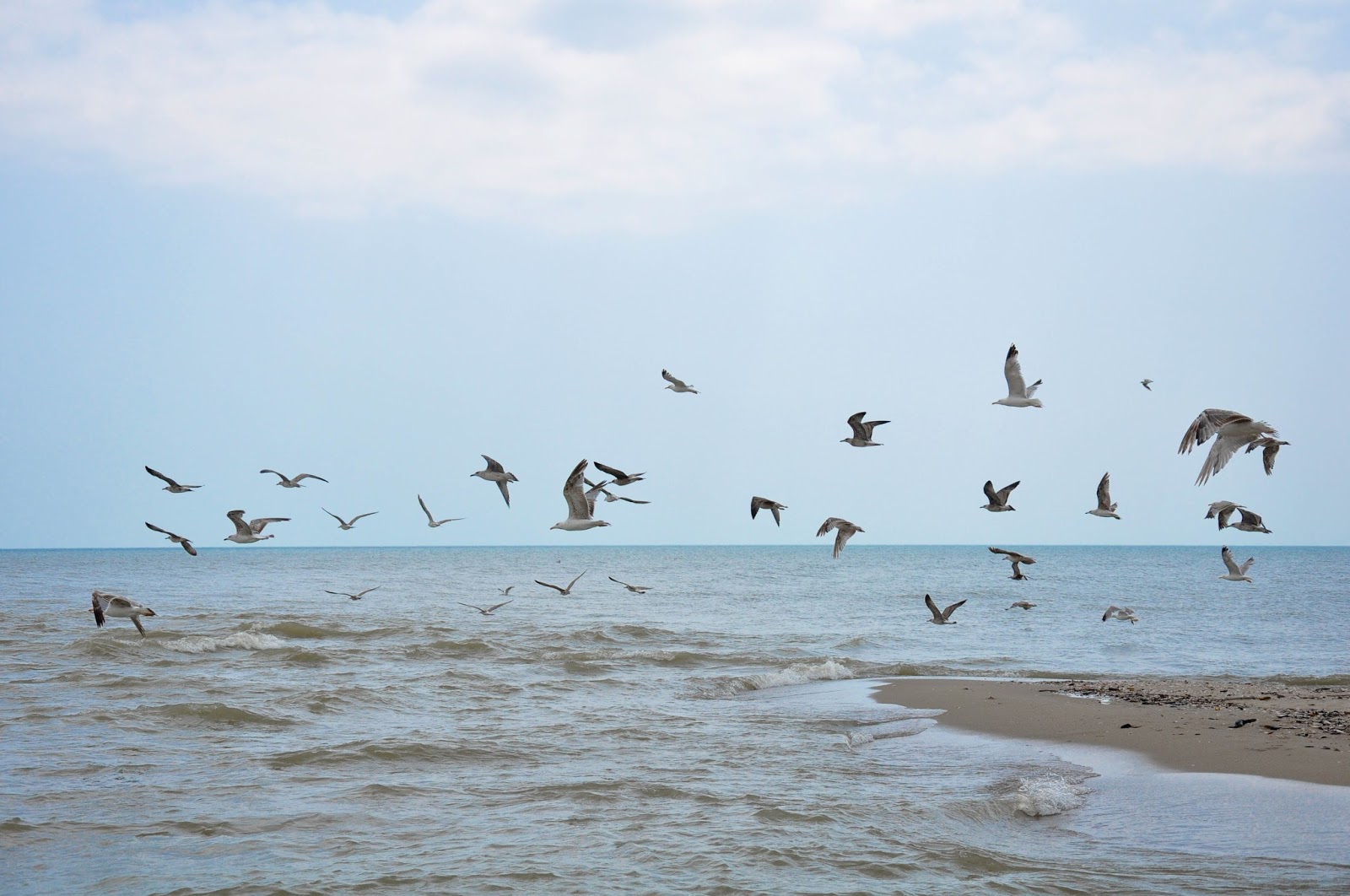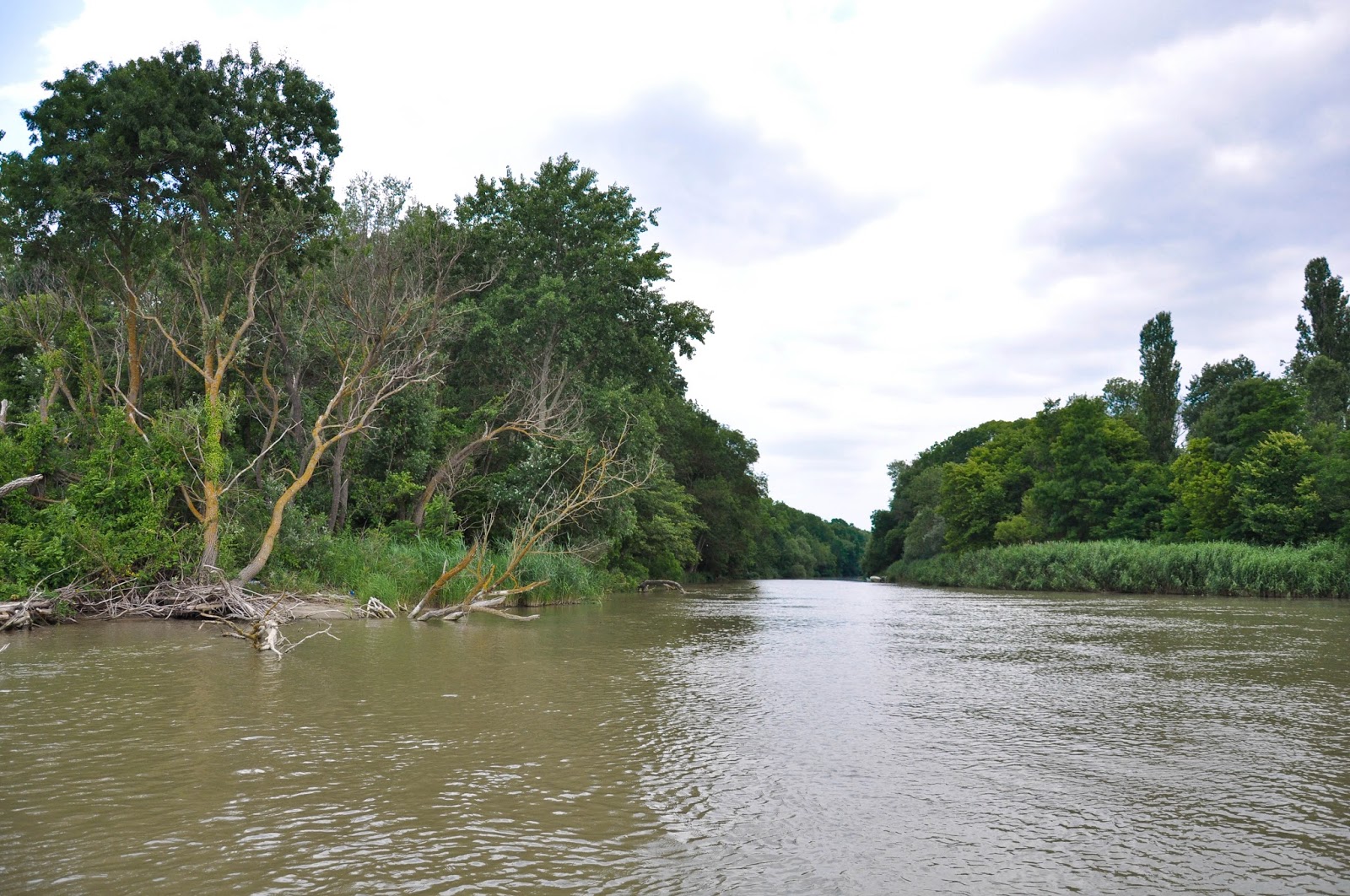If you ever find yourself in Varna on one of those hot and sweaty days when even going to the beach sounds like too much of an effort and you desperately crave a little bit of shade, here is a suggestion. Make your way to the mouth of the river Kamchia!
Lying less than an hour away to the south of Varna, this is a lush and leafy place, where a fresh breeze is guaranteed. A dense nature reserve called Longoza lies on one of the shores of the river.
The other is taken by a fishermen’s village.
Huge willows and several other types of trees lean over the quiet river, their branches almost touching its surface. Tall reeds jut upwards from the silty waters. It all looks wild, almost jungle-like.
The best bit though are the many motor boats which navigate the river and which you can rent to take you round its many curves whilst your skipper gives you a detailed talk about the place.
I love their fancy awnings! I mean the boats’, not the skippers’, you understand.
So, on a hot and sweaty day in Varna this is exactly what we did. We piled in the car and drove down to the river mouth in no time. On the way there I was entertaining my husband with stories of that one time when I was 15 and took a summer job at the canteen feeding masses of tourists at one of the holiday homes on the shores of Kamchia. I had to wake up at 5 am each morning in order to catch the coach ferrying the waiting staff from Varna down to the river. Then, at 6:30 am we would start setting up the tables for breakfast which was served from the ungodly hour of 7 am onwards.
At the start it was all a bit of a shock to the system for me, but after my first week I took to it like a duck to water and even mastered the art of carrying three plates in one hand and up to 40 dessert plates piled high up on a tray. Not at the same time, I must add! I needed both hands for the tray.
After the end of my month-long stint, I went to collect my pay, already making plans about what I was going to buy with it, and was sorely disappointed to find out that 20% of it had been withheld by the company, as they said that staff had broken lots of plates and cups whilst serving the tourists and they needed to fine us for this.
Oh, the cheek!
I was sorely disappointed at the time. Yes, I think I did break a cup once during my month-long hard graft at the canteen, but 20% of my meagre salary to pay for it was a bit extreme.
As I was telling this story to my husband, I felt quite indignant about it all again. It is funny how the small injustices of our youth seem to be the ones we remember the longest. Just then a road sign indicated that we were about to reach the river and I snapped back into the present.
The wheels of the car took us past the large hotels which had been built on the approach to Kamchia in the last decade or so. We bypassed them all until we reached the quay. Tiny shops were overspilling beach paraphernalia on the small high street. A few restaurants were serving a handful of lunch guests. In general, the place looked quite deserted, not at all as bustling and busy as I remembered it.
The river Kamchia was still the same though. Calm and wide, its silty waters slowly dragged themselves to the embrace of the Black Sea. It was time to jump in a boat and explore.
Just then a talkative man with a captain’s hat greeted us politely and asked if we wanted to navigate the river in his boat. He immediately gave us a price, promised an informative talk and before we knew it, we were already seated in the shade of the fancy awning and embarking on a little adventure upstream.
Our skipper was the best!
He entertained us with stories about the river and the people navigating it, pointed the places where the river turtles were sunning themselves, gave us exuberantly detailed information about the nature reserve and just kept a friendly and exciting atmosphere on board.
So, in a few words, let me tell you a bit more about Kamchia – this picturesque and mysterious river, which our skipper quite deservedly called the Bulgarian Amazon.
Kamchia is just short of 250 km in length and it is the longest river on the Balkan peninsula to flow directly into the Black Sea. It meanders through a nature reserve called Longoza, which looks just like a tropical forest.
Imagine a place of dense trees knitted together by long lianas. Over 200 species of birds flutter in their branches. Endangered plants thrive in the moist marshy soils. Among them is the torfaceous snowdrop, which is used by the pharmaceutical industry.
Access to the forest is forbidden. You can’t just go for a walk in it. You can only see it from the river and you can only navigate the river up to a particular point, determined by the local environmental agency.
Many years ago, people would be taken on tours into the forest, but these had to be discontinued as, according to our skipper, the ladies would pick wild flowers and white lilies, whereas the men would pick the abundant fish in order to cook and eat it later in the day.
Nowadays, efforts are made to preserve the forest and its unique biodiversity. If a tree falls down in the forest, again our skipper said, it is not removed or taken away. It is left to slowly rot there in order to help sustain the food chain.
The forest is beautiful to see from the boat. Looking at its dense vegetation, you can’t help but think about what might be hiding behind the lush bushes and in the leafy branches. So as to give us a taster for the place and the life which it teems with, just then a large fish jumped out of the water right next to the boat and above our heads countless of birds flew up and down looking for bugs to eat.
A colony of turtles was happily sunbathing…
…and a handful of beautiful blue dragonflies besieged the ferns sticking out of the water.
On the other shore of Kamchia, directly overlooking the nature reserve, an improvised fishermen’s village had taken shape.
Apparently, the fishermen are subject to several restrictions as to where they can fish. The river often floods their huts, which is the reason why some of them are built raised up.
The village has a bit of a higgledy-piggledy look about it, often with plastic bottles and other such stuff seemingly strewn around or used for everyday tasks like buffering the boats.
The huts also seem somehow crudely put together, but most, if not all of them, boast a satellite dish. We saw several of the fishermen enjoying their lunch al fresco and amiably waving to our skipper as we navigated past.
Having reached the farthest possible point as defined by the local environmental agency, our boat turned round and took us back down the river all the way to where Kamchia meets the Black Sea. On our way we came across a colourful group of canoeists, who intrepidly rowed in the silty water. We waved at them and passed them by.
We got close to the river mouth and the sea. The air was salty and on the horizon the enclosed tube of the river opened up.
Just where the river Kamchia meets the Black Sea sprawling sandy beaches have formed. The constant interaction of river waters flowing out and sea waves coming in apparently keeps changing the precise location of the mouth week in week out.
Large pieces of wood dragged by the water lied on the beach on the side of the nature reserve. Visible among them were the plastic remnants of daily life which some people toss without a thought in the sea.
The beach on the other shore of the river was almost empty. Our skipper told us that this year the number of tourists had fallen.
The view was dramatic and the salty air made us breathe it in in large gulps.
Only too soon it was time to get back to our starting point.
At the quay we thanked our guide, then had lunch in one of the small local restaurants and feeling refreshed we headed back to Varna where the air was still burning hot.


